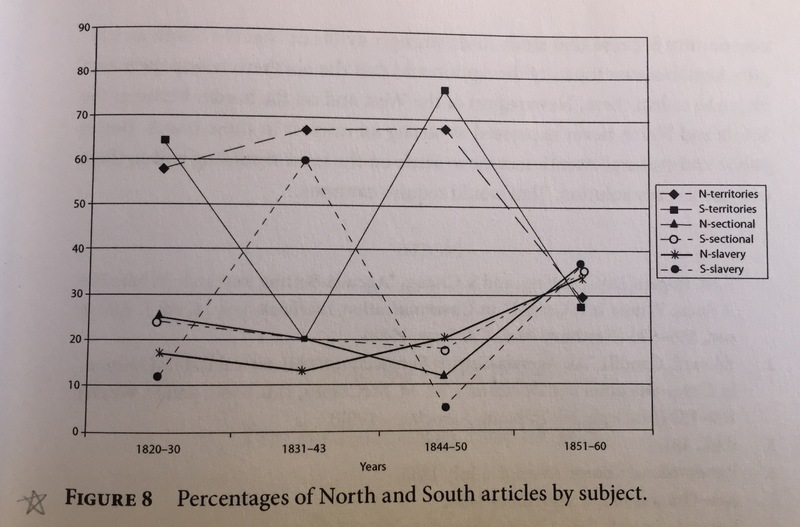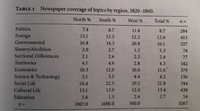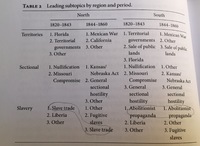Introduction
Instead of newspapers’ traditional roles of intended agenda-setting, the major subject categories and the leading topics of the Southern and Northern News indicate that there was an “invisible hand” among the press that led to the convergence of topics and indication of the beginning of the Civil War. Similar to the theory of the market-oriented economy, it is the freedom of the press that took us to the equilibrium of approaches to the ultimate ideology of the Civil War.
According to Donald Shaw, Randall Patnode and Diana Knott Martinelli’s case study, the topics most pertinent in the years before the Civil War – most historians would argue – were those dealing with territories, sections and slavery.[1] The topic of territories categorizes news about new states naturally raising questions about whether or not slavery would be allowed within their territories, generating lengthy and heated debates. Sectional news, focused on news happened in a specific state or nearby states. They tended to presumably represent similar interests because of similar locations.[2] Territories are referred to new lands while sectional are referred to old lands. Finally, news of slavery system raised most debatable social issues nationally among all three topics above.
This graph focuses on the percentages of North and South articles by territories, sections and slavery so that the relative emphasis of the North and the South is reflected.
- Northern and Southern newspapers agreed in general in emphasis on news about territories and sections.
- In the period from 1831-1843, Southern newspapers gave dramatically more attention to slavery than did northern newspaper.[3]
- During the years of 1844-1850, there was still an enormous difference in the percentage of slavery.
The comprehensive data that covered forty years reflects the existing facts that southern and northern news have their rights and freedom to emphasis on one topic and pay less attention to another.
However, most importantly, on the eve of the Civil War in 1860, sampled newspapers from the North and the South not only emphasized all three topics to about the same extent, but there was a clear convergence of emphasis, with about one-third of he emphasis on territories, sections and slavery in newspapers of North and South.[4]
[1] Shaw, Patnode, and Knott, Southern vs. Northern News: A Case Study of Historical Agenda-Setting, 19
[2] Shaw, Patnode, and Knott, Southern vs. Northern News: A Case Study of Historical Agenda-Setting, 19
[3] Shaw, Patnode, and Knott, Southern vs. Northern News: A Case Study of Historical Agenda-Setting, 22
[4] Shaw, Patnode, and Knott, Southern vs. Northern News: A Case Study of Historical Agenda-Setting,23


